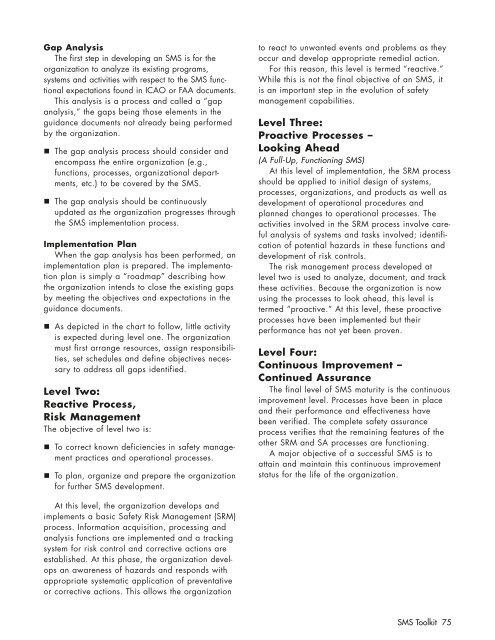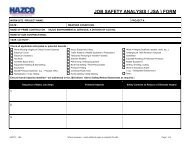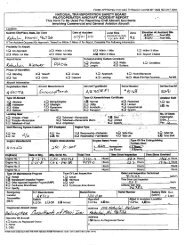International Helicopter Safety Team Safety Management System Toolkit
IHST - Safety Management Toolkit - Skybrary
IHST - Safety Management Toolkit - Skybrary
- No tags were found...
You also want an ePaper? Increase the reach of your titles
YUMPU automatically turns print PDFs into web optimized ePapers that Google loves.
Gap Analysis<br />
The first step in developing an SMS is for the<br />
organization to analyze its existing programs,<br />
systems and activities with respect to the SMS functional<br />
expectations found in ICAO or FAA documents.<br />
This analysis is a process and called a “gap<br />
analysis,” the gaps being those elements in the<br />
guidance documents not already being performed<br />
by the organization.<br />
The gap analysis process should consider and<br />
encompass the entire organization (e.g.,<br />
functions, processes, organizational departments,<br />
etc.) to be covered by the SMS.<br />
The gap analysis should be continuously<br />
updated as the organization progresses through<br />
the SMS implementation process.<br />
Implementation Plan<br />
When the gap analysis has been performed, an<br />
implementation plan is prepared. The implementation<br />
plan is simply a “roadmap” describing how<br />
the organization intends to close the existing gaps<br />
by meeting the objectives and expectations in the<br />
guidance documents.<br />
As depicted in the chart to follow, little activity<br />
is expected during level one. The organization<br />
must first arrange resources, assign responsibilities,<br />
set schedules and define objectives necessary<br />
to address all gaps identified.<br />
Level Two:<br />
Reactive Process,<br />
Risk <strong>Management</strong><br />
The objective of level two is:<br />
To correct known deficiencies in safety management<br />
practices and operational processes.<br />
To plan, organize and prepare the organization<br />
for further SMS development.<br />
to react to unwanted events and problems as they<br />
occur and develop appropriate remedial action.<br />
For this reason, this level is termed “reactive.”<br />
While this is not the final objective of an SMS, it<br />
is an important step in the evolution of safety<br />
management capabilities.<br />
Level Three:<br />
Proactive Processes –<br />
Looking Ahead<br />
(A Full-Up, Functioning SMS)<br />
At this level of implementation, the SRM process<br />
should be applied to initial design of systems,<br />
processes, organizations, and products as well as<br />
development of operational procedures and<br />
planned changes to operational processes. The<br />
activities involved in the SRM process involve careful<br />
analysis of systems and tasks involved; identification<br />
of potential hazards in these functions and<br />
development of risk controls.<br />
The risk management process developed at<br />
level two is used to analyze, document, and track<br />
these activities. Because the organization is now<br />
using the processes to look ahead, this level is<br />
termed “proactive.” At this level, these proactive<br />
processes have been implemented but their<br />
performance has not yet been proven.<br />
Level Four:<br />
Continuous Improvement –<br />
Continued Assurance<br />
The final level of SMS maturity is the continuous<br />
improvement level. Processes have been in place<br />
and their performance and effectiveness have<br />
been verified. The complete safety assurance<br />
process verifies that the remaining features of the<br />
other SRM and SA processes are functioning.<br />
A major objective of a successful SMS is to<br />
attain and maintain this continuous improvement<br />
status for the life of the organization.<br />
At this level, the organization develops and<br />
implements a basic <strong>Safety</strong> Risk <strong>Management</strong> (SRM)<br />
process. Information acquisition, processing and<br />
analysis functions are implemented and a tracking<br />
system for risk control and corrective actions are<br />
established. At this phase, the organization develops<br />
an awareness of hazards and responds with<br />
appropriate systematic application of preventative<br />
or corrective actions. This allows the organization<br />
SMS <strong>Toolkit</strong> 75







